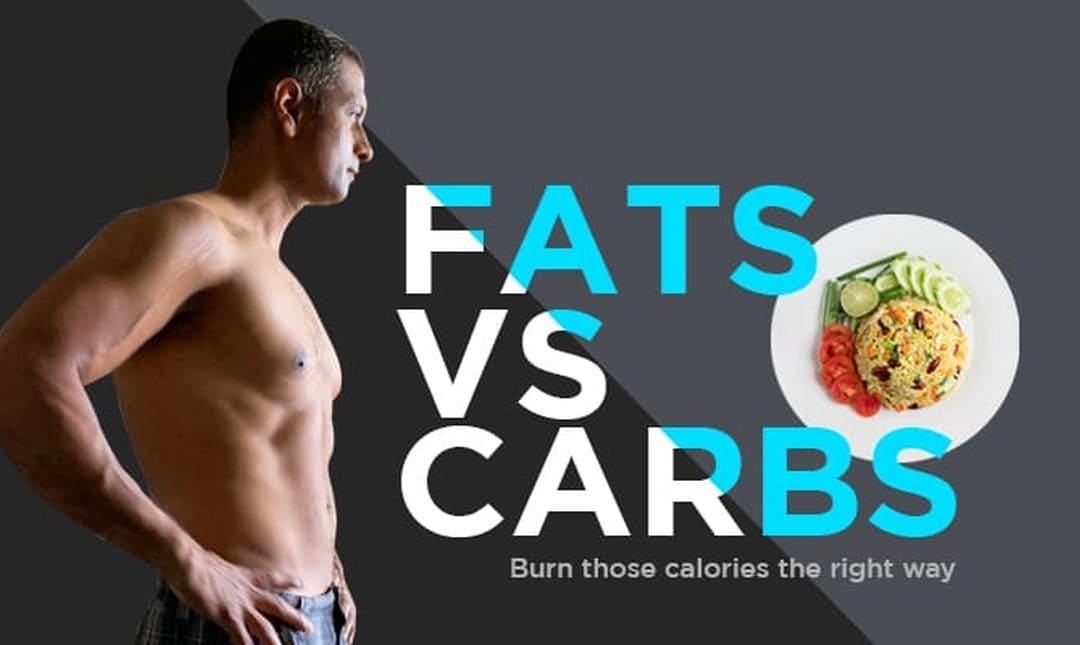“You are what you eat”. Often followed promptly by “eat fat and you will become fat”. These are phrases repeated to us by our parents, families, friends and other well-meaning sources of guidance that surround us.
People often ask me why I write long posts. Well, whenever something is that steeped in the thinking of the general population, it takes a fair bit of justification to even dare to suggest anything to the contrary. What does give me great pleasure is the knowledge that most of my clients have managed to remain lean (and even lose more fat) during all the restrictions imposed by the pandemic.
Based on my TrueLean principles, my typical daily eating patterns look something like this:
- Approx 60% of my daily calories come from fats. And 90% of those fats are saturated fats (ghee / butter / coconut oil / etc)
- Approx 20-30% of calories constitute sources of protein
- Carbs make up the remaining 10-20%. This is on days when I’m sedentary. When my activity levels go up, the carb intake goes up as well (to replenish muscular glycogen).
- There are obviously those days when I go on an absolute binge and eat a ton of chocolate cake coupled with a tub of ice cream (or whatever else is on offer).
 As the picture above will (hopefully) illustrate, all this fat in my diet seems to make it easy for me to maintain low bodyfat % levels all year round. Most of my clients eat the same way, and generally see a sustained pattern of fat loss results, coupled with a lifestyle that never feels like restricted dieting. Meal timings do not matter either. Some of them eat two meals a day, while others eat 4-5 meals. Some skip breakfast and eat humongous dinners, others do exactly the opposite. Hmmm. Sounds a lot like the typical uncertainty imposed by the pandemic, doesn’t it? The best part is that it’s all borne out by science.
As the picture above will (hopefully) illustrate, all this fat in my diet seems to make it easy for me to maintain low bodyfat % levels all year round. Most of my clients eat the same way, and generally see a sustained pattern of fat loss results, coupled with a lifestyle that never feels like restricted dieting. Meal timings do not matter either. Some of them eat two meals a day, while others eat 4-5 meals. Some skip breakfast and eat humongous dinners, others do exactly the opposite. Hmmm. Sounds a lot like the typical uncertainty imposed by the pandemic, doesn’t it? The best part is that it’s all borne out by science.
But for once, let’s say we set aside all the mind-numbing stuff of how hormones like insulin/leptin/glucagon/catecholamines interact to control the energy systems. Surely, there must be an ‘intuitive’ way of understanding that the body actually prefers fat as its main source of fuel?
Today’s post is all about that: nutrition based on intuition. And interestingly enough, the clues to that lie within the body.
The Fasting Model
If there is one word to help describe why our bodies function the way they do, it is ‘evolution’. We have evolved to thrive in most conditions, and worst case, to adapt and survive when the conditions start to become untenable. The body has developed the ability to go a few days without food, and yet retain the energy and strength to be able to hunt down its next source of nutrition. In other words, it has developed the ability to store exactly the fuel and other essential items that it needs for maximum sustenance, should food suddenly become scarce.
And that, my friends, leads us to the intuitive approach. This model is called the ‘fasting model’. When you stop eating, the body starts using its own stored resources (feeding itself from within). And if we were to analyze the ratios in which the body stores fats / proteins / carbs, it will give us an idea of what its nutritional preferences really are. In very simple terms, the way we often ask nutritionists “how should we feed our bodies?”, this analysis is almost like asking the body “how do you prefer to feed yourself?”
To derive actual numbers from this whole endeavor, let us take a look at a simple (though hypothetical) experiment. We will take a healthy, reasonably lean individual weighing approx. 70 kgs at about 18% bodyfat (fairly average) and lock him up in a room with plenty of water to drink, but no food. The intent is to see how long our subject will last. This is a ‘forced’ fast, but sometimes we have to do cruel things for the benefit of readers.
Finally, let’s get to the actual numbers. The composition of the individual that we have chosen would be:
- 42 kgs water (approx. 60% of the bodyweight)
- 12.6 kgs fat (18% bodyfat)
- 11.5 kgs protein
- 500 gms of glucose (in the muscles and liver)
- The rest would be minerals
Now that we have the content of fats, proteins and glucose, we shall measure the energy amounts. For those who aren’t used to this: 1gm of fat yields 9 cal, while 1gm of glucose/protein gives 4 cal. Plug in the numbers and we get the following.
- Total energy stored (fats + protein + carbs): 160,000 cal
- Energy stored as Fat: 112,000 calories (70% of total energy)
- Energy stored as Carbs (glucose) : 2000 calories (2% of total energy)
- Energy stored as Protein: 45,000 calories (28% of total energy)
- Proteins need a closer look. They can be used for energy, but also perform many other functions (many hormones, enzymes and other signaling mechanisms are protein based). So let’s assume that 50% of protein is truly available for energy
- Energy actually available as protein: 22,500 calories (50% of total protein)
- Total energy actually available (after compensating for the protein) : 1,35,000 cal
NOTE: Right off the bat, you might notice that the glucose numbers are minuscule.
So, our subject begins his fast. As we’re denying him food, the body nourishes itself from within. Stored energy is released. Tissues will be broken down to release nutrients for other more important tissues. The released nutrients will also provide energy for processes required for the body to function. Let’s assume his daily energy requirement is 2500 cal. Do a quick calculation (135K calories, about 2500 calories per day), and our subject will last for 50-60 days.
Not so quickly, though. The body has evolved to adapt and survive, so a closer look will reveal some interesting changes. The first tissue that is lost (eaten) is muscle. Protein is in constant turnover in the body, as amino acids are needed for structural purposes, signaling mechanisms, energy pathways, etc. Glucose is the other nutrient that needs to be constantly replenished, as the brain continues to sip glucose for its function. As a result, the muscle is broken down to release amino acids (which are then further partly converted to glucose). As the subject grows weaker, though, more things begin to happen. First, the body starts converting some of the fat to glucose, to keep the brain satisfied and spare the protein. Second, the abundant fat is also converted into ketones, and the brain starts using them for energy, instead of solely relying on glucose (again sparing protein). Third, the body down-regulates its own metabolism by about 15%-20% (less important functions are slowed or shut down) to further conserve energy. All in all, adaptations ensure further extension of the life span, while attempting to retain the subject’s strength. Compensate for these changes, and the final survival span would be a whopping 75-90 days. Just to prove that our hearts are in the right place, we shall modify the experiment and allow the subject to keep a few books (or perhaps a Kindle) in the room (else it would be a boring way to go).
There’s one final piece in the puzzle. I had mentioned above that both fats and protein can be converted into glucose. Both molecules have glucose ‘hiding’ within them. Fats (triglycerides) have a glycerol backbone, while most proteins are glycosylated (have glucose folded into the molecule). As a result, initial calculation isn’t entirely accurate. In the energy numbers above, I had converted all of the fat weight into energy at 9cal/gm and all of the protein at 4cal/gm. However, we now know that it isn’t accurate, because some of that weight is due to glucose. Let’s assume that both fats and protein offer about 15% of their total energy through glucose. We will deduct that amount from their respective numbers and add that to the glucose section. The result now looks something like this
- Total energy stored (fats + protein + carbs) : 160,000 cal
- Fat: 95,000 calories (60% of total energy)
- Protein: 38,000 calories (24% of total) Glucose / Carbs (new adjusted value) : 26,000 calories (16% of total)
Hmmm. So the body stores Fats/Proteins/Carbs at typical ratios of 60%/ 24%/16%. These look remarkably similar to the daily intake that I mentioned right at the beginning of this post. So perhaps both research based and intuition based approaches do lead us towards a common conclusion. Worth a second look? I would certainly think so!
The Bottom Line
If you follow a mostly sedentary lifestyle, you may want to experiment with the concepts presented here. Try to follow the macro breakdown above and see how you fare. This intake will be more than adequate to sustain 3-4 long walks a week. As you adapt, you may find that you are able to get through sports and long runs without needing frequent re-fueling, while people around you are consuming energy drinks or gels every few km. The basic idea is that the body is adapting to using fats for anything that it considers a low-moderate intensity activity.
If you are into high volume, high intensity activities, you can bump up the carb intake to compensate for the loss of glycogen. Choose your carbs from potatoes, rice, yams, etc, any sources that give you starches while causing minimal inflammation. Add in some greens to supplement your diet with vitamins, minerals, fiber and resistant starches. A small helping of fruit a day won’t hurt either. Put this together, and you should have the perfect, sustainable diet that gives you long term fat loss and improves all your health markers. And oh, you can still have your binge days without getting overwhelmed by feelings of guilt. As with anything else, learn the rules, so you can learn how to break them and still be successful.
Until next time.

